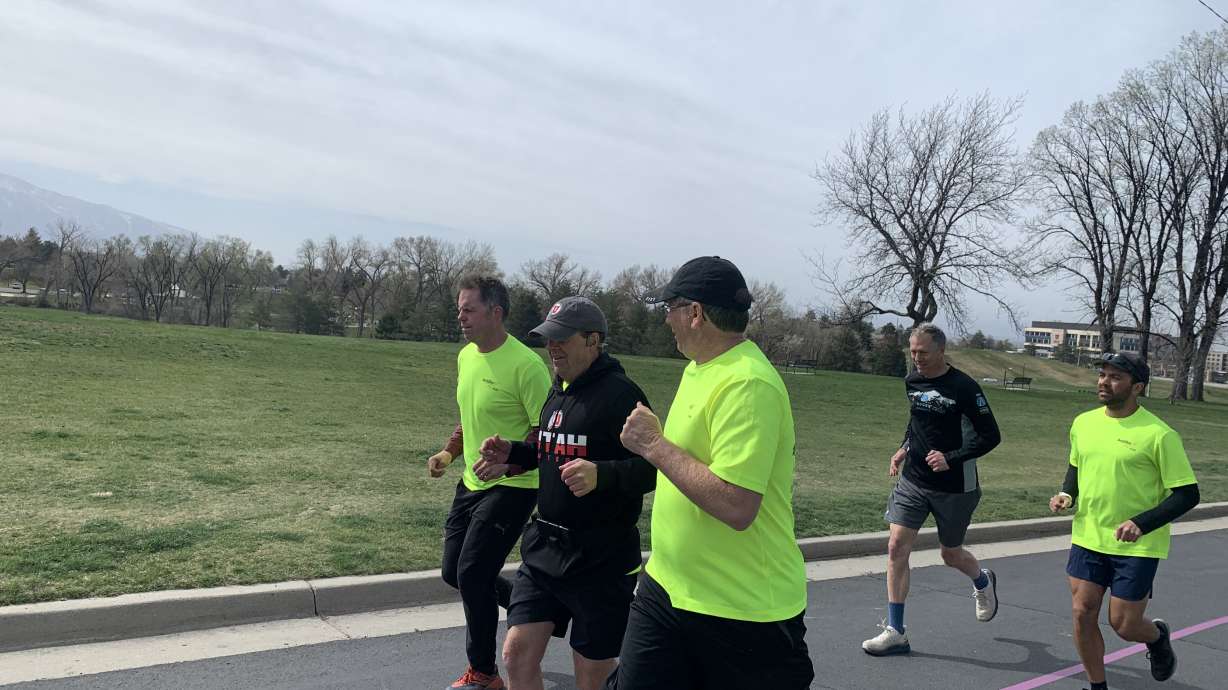Estimated read time: 4-5 minutes
This archived news story is available only for your personal, non-commercial use. Information in the story may be outdated or superseded by additional information. Reading or replaying the story in its archived form does not constitute a republication of the story.
SALT LAKE CITY — Utah athletes living with blindness regularly put their trust in sighted counterparts to guide their every footstep as they run across pathways they cannot see. But Google is developing technology that could one day allow these runners to exercise independently.
Project Guideline, a product of a partnership between global nonprofit Achilles International and Google, is being tested in 20 different cities in the United States, with Salt Lake City being one of the testing sites.
On April 9, six runners who are legally blind, along with seven volunteers to help them, tested the technology in Sugar House Park, according to Ken Duke, the Achilles Utah chapter president, who is one of the runners living with blindness.
"It definitely gave me the hope and the excitement that it could happen in the future," Duke said. "It wouldn't work the way we were testing, because it wasn't … developed all the way. But it definitely gave that impression that yes, this is something that could work here in the near future."
Armed with a cellphone and headphones, runners like Duke will be able to follow a designated path to run without assistance. Mikhail Sirotenko, Google research technical lead manager, told KSL.com the cellphone will be harnessed around the runner's waist and will use an app to track a painted line on the ground to alert the runner if they are veering off the path. If they are veering too far to the left, a signal will sound in the left ear through the headphones, and vice versa if they are straying too far to the right. Additionally, there will be no need for the phone to have an internet connection.
"This is an attempt to learn if on-device technology delivered by a mobile phone can one day provide enhanced experiences for the blind and low vision community by providing additional helpful alternatives," Sirotenko wrote in an email. He noted that the project is an early-stage research project and still requires a sighted individual to help operate the system. He also mentioned that the painted line is meant to be on a pedestrian-only path, free of obstacles.
Achilles International President and CEO Emily Glasser said Utahns had the highest number of participants out of the 14 cities they've done trials in so far, "really demonstrating a curiosity and a generosity of spirit and support for what is really going to be a transformative technology."
Duke was born with a retinal degenerative disease and has always been legally blind. His vision has gradually decreased throughout his life, rendering him completely blind about five years ago. Nevertheless, his passion for running overrules the obstacles he faces, and he has completed 59 marathons and five Ragnar races.
Duke said due to his blindness, he can't play basketball or tennis, but with a guide, running is a sport he can do.
"So I enjoy the sport, I enjoy the competition, and I enjoy the training, and I mostly enjoy the friendships and the camaraderie I have with my guides," Duke said. "And I've been able to meet a lot of people and have a lot of good long-term relationships with the guides that I run with."
Ben Alvord is one of those guides and was there for the Project Guideline trial. Alvord said he was a bit nervous when he first started running as a sighted guide.
"It's pretty nerve-wracking at first, knowing that someone's depending on your eyes and your warnings like that, but it just takes practice," he said.
Alvord and Duke have developed a great friendship over the years, and although Alvord joked that Project Guideline would be putting him out of a job, he said he'd still like to run with Duke, even if he's not acting as a guide.
Duke said running independently would give him the freedom to set his own pace without worrying that he's going too fast or slow for whoever is guiding him.
Glasser said she is very proud of the Achilles Utah chapter for embracing the project and for the contribution of their energy, enthusiasm, time and support.
"I believe firmly in Google's capacity to deliver this technology, and certainly Achilles is doing all it can to assist in advancing the technology to a place where it could be more broadly shared," Glasser said.
The Utah Chapter of Achilles currently meets every Saturday on the north side of Sugar House Park to run.
Sirotenko did not have a projected date for when the technology would be fully available to blind and low-vision users to utilize independently. He said they are currently trying to get the technology to recognize obstacles, such as other runners on the running path, which is very difficult.









